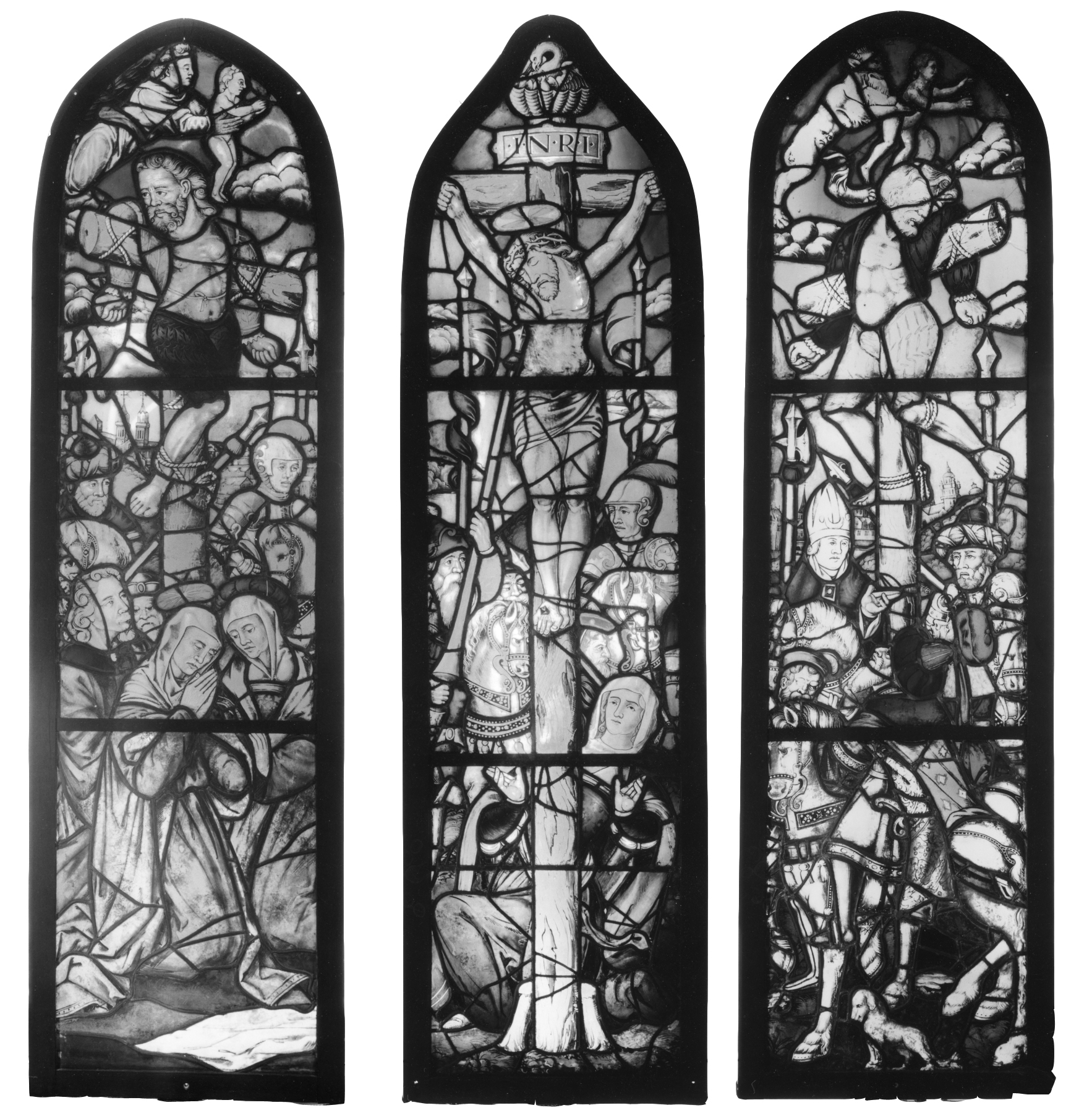Crucifixion
(Renaissance Europe )
The central window illustrates Christ's Crucifixion, while the other two depict the thieves described in the Gospel of John as crucified with him. Christ is pierced by the centurion's lance as Mary Magdalene kneels in sorrow at the foot of the cross. To Christ's right is the repentant thief whose soul is received by an angel. At Christ's feet are the Holy Women and St. John. To Christ's left, a little devil snatches the soul of the unrepentant thief.
The combination of the use of brilliant color, especially blues, and the figural style with large, rather flat figures crowding the picture surface is very close to the effect found in contemporary French enamel work, for example Penicaud's "Triptych with Crucifixion," (Walters 44.149).
Provenance
Provenance (from the French provenir, 'to come from/forth') is the chronology of the ownership, custody, or location of a historical object. Learn more about provenance at the Walters.
William T. Walters, Baltimore [date and mode of acquisition unknown]; Henry Walters, Baltimore, 1894, by inheritance; Walters Art Museum, 1931, by bequest.
Geographies
France (Place of Origin)
Measurements
Part A, H: 77 x W: 18 1/8 x D: 1 in. (195.6 x 46.1 x 2.5 cm) approx.; Part B, H: 77 1/2 x W: 18 1/8 x D: 1 in. (196.9 x 46.1 x 2.5 cm) approx.; Part C, H: 77 x W: 18 1/8 x D: 1 in. (195.6 x 46.1 x 2.5 cm) approx.
Credit Line
Acquired by William T. Walters
Location in Museum
Centre Street: Third Floor: 15th-Century Art of Northern Europe
Accession Number
In libraries, galleries, museums, and archives, an accession number is a unique identifier assigned to each object in the collection.
In libraries, galleries, museums, and archives, an accession number is a unique identifier assigned to each object in the collection.
46.33


